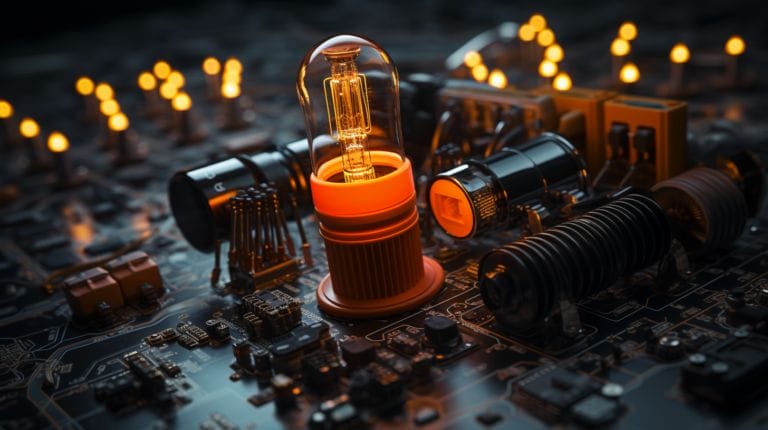How to Reset LED Light Strip: Illuminate Your Space
Struggling to get your LED light strip working perfectly again? Whether it’s due to connectivity issues or unresponsive controls, resetting your LED light strip can be the solution. This guide will walk you through the simple steps to reset your LED light strip, helping you restore its optimal performance and regain control over your lighting. Illuminate your space with renewed brilliance and creativity!
Key Takeaways
- Disconnect the power source to ensure safety before resetting the LED strip lights.
- Inspect and replace the fuse if the strip light continues malfunctioning.
- Reconnect and press the reset button, or follow the manufacturer’s reset instructions.
- Confirm all connections are secure and the power supply matches voltage requirements.
- Perform periodic resets to clear any software glitches and maintain performance.
Understanding the Basics of LED Strip Lights

LED strip lights are versatile, energy-efficient lighting solutions that can transform any space. They consist of small LED chips mounted on a flexible circuit board, which makes them suitable for various settings—from under-cabinet lighting to architectural accents.
Powering these lights requires a power supply that matches the strip’s voltage requirements. Most LED strips operate on low voltage, typically 12V or 24V, for safety and efficiency. The power supply is responsible for converting the main voltage to the required low voltage.
Controller is another essential component, allowing us to adjust brightness, color, and modes. Some controllers come with a reset button, which can restore default settings and is useful in troubleshooting. LED neon strips, a variant of LED strips, offer a continuous, smooth light similar to traditional neon but with the efficiency and flexibility of LEDs.
Identifying the Need to Reset LED Strip Lights

Sometimes, our LED strip lights might exhibit issues like flickering, unresponsiveness, or erratic color changes, signaling the need for a reset. These problems can arise due to various factors, including a malfunctioning power adapter or environmental factors like high humidity.
Another sign that a reset is needed is when the LED strip fails to respond to remote commands or displays incorrect colors. In these cases, looking for a reset symbol or button on the control box can be the first step toward a solution.
Resetting isn’t something we should do frequently; it’s more of a troubleshooting step when issues persist. However, recognizing these signs early helps us act swiftly, ensuring our spaces remain well-lit and vibrant without interruptions.
A Step-by-Step Guide on the Reset Process for LED Strip Lights

Resetting your LED strip lights effectively involves a few specific steps. Here’s a detailed guide:
- Disconnect the Power Source: Unplug the LED strip from its power source to ensure safety. Wait about 30 seconds before proceeding to allow residual power to dissipate.
- Check and Replace the Fuse: Inspect the fuse of your LED strip lights for any signs of damage. Replace if necessary. This step is essential for restoring functionality.
- Reconnect and Reset: Plug the LED strip back into the power source. Hold down the reset button for a few seconds if your LED strips come with one. If not, refer to the manufacturer’s instructions for specific reset procedures.
Following these steps should reset your LED strip lights and prepare them to illuminate your space again. If the lights still flicker or don’t change color as expected, further troubleshooting may be necessary.
Extending the Lifespan of LED Strip Lights through Proper Maintenance

Proper maintenance is critical for extending the lifespan of LED strip lights. Routine practices, such as dusting off the strips and checking connections regularly, can prevent common issues and prolong their lifespan.
Periodically resetting our LED strip lights can clear any software glitches that may cause them to malfunction over time. This simple step can greatly contribute to their longevity and performance.
Proper installation is also crucial. Ensuring that our LED strips are installed on clean, dry surfaces and avoiding sharp bends can prevent damage. Using appropriate power supplies can prevent circuit overload, which can lead to premature failure.
Getting Help: When to Get in Touch with Us for LED Strip Light Issues

When facing persistent issues with your LED strip lights that routine maintenance can’t resolve, it’s time to get in touch with our professional team for assistance. Whether it’s flickering, dimming, or complete failure, our experts are here to provide the professional assistance you need. We recognize that innovation and reliability are paramount, and our services are designed to keep your space illuminated flawlessly.
Here are some scenarios when you might need our help:
- Complex troubleshooting: If you’ve tried basic troubleshooting LED strip lights and the problem persists, our team can diagnose and fix intricate issues.
- LED lights maintenance: Regular maintenance by professionals ensures longevity and top performance, preventing future problems.
- Expert advice: We offer tailored solutions and recommendations for your unique setup, ensuring you get the most out of your LED strips.
The benefits of getting help from our professionals include peace of mind, extended lifespan of your LED strips, and enhanced performance.
Conclusion
To sum up, resetting LED light strips can be straightforward if we follow the right steps. By disconnecting the power, checking the fuse, and using the reset button, we can resolve flickering or color issues effectively. Let’s make sure we’ve the necessary tools and connections before starting the reset process.
Proper maintenance will help extend the lifespan of our LED strips. If we encounter any issues, don’t hesitate to reach out for assistance.
Frequently Asked Questions
How do I reset my LED light strip?
To reset your LED light strip, look for a small button on the LED controller. Press and hold the button until the LED lights together confirm that the LED strip has been successfully reset.
What should I do if my LED light strip is flickering?
If your LED light strip is flickering, it might be time to perform a reset. Press and hold the reset button until the lights together confirm that the reset was successful.
Can I damage my lights by resetting them?
Resetting your LED lights using the correct method should not cause any damage. However, it’s important to follow the manufacturer’s instructions to ensure a smooth reset process.
How often should I reset my LED light strip?
You should only need to reset your LED light strip if you are experiencing issues such as flickering or connectivity problems. Otherwise, regular maintenance and troubleshooting should keep your lights operational.
What is the reset mechanism for LED light strips?
The reset mechanism for LED light strips usually involves pressing and holding a small button on the LED controller until the lights confirm that the reset was successful.
Do LED light strips have fuses?
LED light strips typically do not have replaceable fuses. If you are experiencing issues, it’s best to consult the manufacturer’s guidelines or contact customer support for help.







